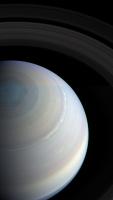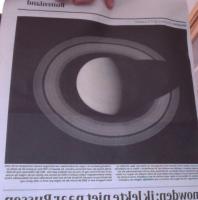Printable Version of Topic
Click here to view this topic in its original format
Unmanned Spaceflight.com _ Cassini's ongoing mission and raw images _ Rev198: Saturn wide-angle mosaic
Posted by: ugordan Oct 16 2013, 11:07 PM
On October 10th, Cassini wide-angle camera captured a set of 12 RGB footprints covering Saturn and the rings. Here's an attempt at compositing that data into a mosaic. It's not geometrically accurate, but I tried coaxing the data into at least looking nice.
http://i.imgbox.com/ackoxY7l.jpg
Posted by: elakdawalla Oct 17 2013, 12:17 AM
...and that one's going straight to the blog. Absolutely amazing work with the raw JPEGs, Gordan.
Posted by: tedstryk Oct 17 2013, 01:13 AM
My jaw just hit the floor...amazing!
Posted by: ElkGroveDan Oct 17 2013, 04:17 AM
Holy smokes! I'm speechless. Thank you Gordan for sharing.
Posted by: Astro0 Oct 17 2013, 05:16 AM
Wow! That's the sort of view I've dreamed I would only ever see in a science fiction movie or if we had somekind of amazing futuristic spacecraft orbiting around that distant ringed planet....WAIT! We do! ![]()
![]()
Posted by: Explorer1 Oct 17 2013, 05:23 AM
Aaaand that's a new desktop...
Posted by: remcook Oct 17 2013, 07:28 AM
Really great! ![]()
Posted by: Ian R Oct 17 2013, 09:36 AM
Amazing Gordan! ![]()
If you don't mind me picking your brain, just how do you go about combining the night-side hemisphere with the sunlit part of the disc? HDR merging or your own special sauce? ![]()
This was my attempt at working with the Clear-filtered frames:
http://postimg.org/image/w3qnpzhtl/full/
Posted by: ugordan Oct 17 2013, 10:52 AM
Ian, I simply assumed the original data used 12bit encoding mode used so the JPEG DNs are basically linear (a reasonable, but not 100% accurate assumption when uncalibrated images are concerned) as it looked that way to me and the color profile I use in Photoshop (and the one I use for calibrated data that is linearized by default) automatically adjusts that to the sRGB 2.2 display gamma. The nightside was heavily noise-reduction filtered to reduce blocky artifacts, though.
Posted by: The Bad Astronomer Oct 17 2013, 12:18 PM
I just posted about it as well, with a description of some of the sights. Gordan, this was an AMAZING piece of work! And Emily, thanks for linking to it; I saw it first in your tweet and blog. I credit you, of course.
http://www.slate.com/blogs/bad_astronomy/2013/10/17/cassini_s_saturn_incredible_mosaic_by_gordon_ugarkovic.html
[Sorry to misspell your first name in the URL!] My favorite part (besides the steep angle lowering the usual elliptical appearance of the rings) is seeing Prometheus and Pandora to the upper right of the F ring. Astonishing, on this scale.
Posted by: jamescanvin Oct 17 2013, 01:05 PM
Oh My! That is astonishing. New desktop here as well. ![]()
Posted by: stephenv2 Oct 17 2013, 02:56 PM
"looking nice" is the understatement of the century. That is a stunning. breathtaking image. Incredible work.
Any chance of sending me the uncompressed master of this? This would be ideal for animation sequence in the film due to its resolution
Posted by: Explorer1 Oct 17 2013, 05:05 PM
You're on Slashdot too (and so is this thread).
http://science.slashdot.org/story/13/10/17/1354218/saturn-in-all-its-glory
Posted by: ElkGroveDan Oct 17 2013, 05:30 PM
Whoa, Phil, good eye. That really is amazing.
Posted by: stephenv2 Oct 17 2013, 05:57 PM
Agreed. Gordan sent me a lossless version of this for use in the film and I'm mulling over it if I can connect it to some of Cassini's closer view of Prometheus and Pandora. I will have to look closely at my raw archives. There is some stuff here but not sure if 100% will match up: https://vimeo.com/68912616.
I just looked at this on my cheap 50" Seiki 4K UltraHD I have hooked up to my main desktop. Pretty staggering at full resolution. Can't wait to see this on a 8-story high screen.
Posted by: wildespace Oct 18 2013, 07:51 PM
The mosaic is the Image of the Day at NASA: http://www.nasa.gov/mission_pages/cassini/multimedia/saturn20131017.html
You're a celebrity in space circles now ![]()
I like doing RGB stacks from Cassini, but I don't know how to calibrate colours (rather than adjust them arbitrarily until they resemble "true colour"), so my Titan appears white with vivid blue haze, and my Saturn is bluish-yellowish-grey. But Saturn's atmospheric features are more prominent.
Posted by: remcook Oct 19 2013, 09:24 AM
Today in the paper. Not bad at all Gordan! ![]()
(might need to mirror the image ![]() )
)
MOD NOTE: Edited to remove political comment.
Posted by: dilo Oct 19 2013, 11:37 AM
Congratulations, Gordan... breathtaking image!
Posted by: Ian R Oct 21 2013, 08:07 PM
Gordan,
Many thanks for the explanation: the first thing I indeed noticed was the difference in gamma between your composite and my attempt at the clear-filtered mosaic. With regards to the JPEG DNs, how would you tackle a raw you suspect of being an LUT-converted 8-bit image? Trial and error? Or is there a way to approximately reverse the conversion?
Thanks again.
Posted by: ugordan Oct 21 2013, 08:47 PM
I haven't found a reliable way to handle the LUT-encoded stuff which makes up for the majority of Cassini imagery. It's mostly trial and error. I found it's more difficult to do mosaics as well. Theoretically, the LUT uses a square root encoding slope so if you wanted to "linearize" it, you might want to apply a 0.5 gamma (working in 16 bit depth at all times, of course), but I found that doesn't work out nice.
The good thing about the LUT encoding is you don't really have to linearize it, it's pretty close to an inverse of the default sRGB gamma so simply loading the raws into RGB channels in any vanilla photo editor and you're pretty much good to go (assuming the histogram stretch didn't massively clip dark and bright levels).
Posted by: stephenv2 Oct 21 2013, 09:03 PM
I have not done this yet but a curves preset could be build from a LUT if someone is up to the task: http://blog.coherent-labs.com/2012/10/converting-adobe-photoshop-acv-to-lut.html It would be a reverse of this process.
Posted by: ugordan Oct 21 2013, 09:16 PM
It would be a simple enough task if it wasn't for the raw histogram stretch automatically applied on the ground. Once that's done, you have no idea what original level was mapped to Jpeg DN 255, likewise for DN 0. This is what, I think, makes matching brightnesses between separate frames and mosaic footprints in LUT mode difficult. Too many degrees of freedom involved. You have the one-size-fits-all Photoshop levels curve at your end, but the actual flight LUT curve was stretched an unknown amount by the ground histogram stretch. Convolve those two and you still end up with nonlinearities.
For 12 bit stuff, especially if it shows some black space so the stretch leaves it alone, you basically have just one thing to play with - brightness.
Posted by: stephenv2 Oct 21 2013, 09:20 PM
I was under the impression that the amount of stretch was in extra lbl calibration data - or am I confusing this with SDO? We've been working with so much data lately. Kevin McAbee, the other key volunteer on the film, has been working on Cassini to automate processing of the raw files. I can check with him too.
Posted by: ugordan Oct 21 2013, 09:25 PM
There is no camera metadata available for the Cassini raw images that I'm aware of. For PDS archived stuff this is not an issue, of course.
Posted by: stephenv2 Oct 21 2013, 09:32 PM
I'm pretty sure you are right, I don't recall seeing it either, I think that is only SDO (which has it's own sets of problems and is actually much harder to deal with). I poked around in some of my data stores and don't see anything except from PDS.
Posted by: Bjorn Jonsson Oct 21 2013, 11:09 PM
Wow... this is awesome, especially when keeping in mind that it's from JPG data and not PDS files.
Posted by: pat Oct 28 2013, 07:05 AM
And the mosaic using the science quality images
http://photojournal.jpl.nasa.gov/catalog/PIA17474
Posted by: djellison Oct 28 2013, 01:49 PM
Honestly - I prefer ugordan's ![]()
Posted by: tedstryk Oct 28 2013, 02:29 PM
Yeah, the official one is, err, really yellow.
Posted by: algorithm Oct 28 2013, 05:03 PM
Agreed, not as asthetically pleasing as Ugordans. The photojournal site linked to a couple of posts above does however say that the image 'is as human eyes would see it'. This sounds to my untrained ears like a fairly bold statement.
Posted by: Astro0 Oct 28 2013, 10:42 PM
The official one is a bit disappointing. Some very bad joins, the F-ring is almost completely gone and the two small moons have disappeared. ![]()
![]()
Posted by: brellis Oct 28 2013, 10:44 PM
thanks ugordan - my desktop is now complete!
Posted by: mcaplinger Oct 28 2013, 10:59 PM
All these observations about the shortcomings of the official release (however accurate or otherwise) are, IMHO, violations of rule 2.6.
Posted by: tedstryk Oct 29 2013, 02:16 AM
Suggesting that an official release image could have been done better or that another version is better I don't see how this fits into the prerequisite for 2.6, namely "When mentioning scientists, engineers, or other mission personnel..." - there is no such mention. If it turned into accusations of incompetence and such, I would see it differently, as that would be an implicit mention. That said, we should give it a rest, as points have been made and continuing on this route is, I would agree, in poor taste.
Posted by: Ian R Nov 10 2013, 06:51 AM
Taking the thread on to less controversial ground, here are a couple of rings movies; the second in particular shows two, maybe three, ghostly 'blink-and-you'll-miss-them' spokes, plus the eccentric Huygens Ringlet stands out by virtue of its inherent 'wobble':
The Rotating Rings of Saturn (October 19, 2013)
http://www.youtube.com/v/42NRH-LNonQ&hd=1
The Elusive Spokes of Saturn (October 22, 2013)
http://www.youtube.com/v/O4wn81eI2lw&hd=1
Posted by: stephenv2 Nov 10 2013, 03:19 PM
Great stuff Ian - very nice work. How many frames per second are the masters of these?
Was thinking these might be really fun with some Phillip Glass type music.
Posted by: Ian R Nov 11 2013, 12:34 AM
Thanks! All I did was tween the original 58 frame sequence from 8fps to 16fps.
Posted by: tanjent Nov 11 2013, 02:00 PM
It is interesting that in addition to the hexagonal gray area very close to the pole, some of the other demarcation lines all the way out to the white cloud bank at about 30 degrees also appear to be composed of straight segments approximately equal in length. Certainly the gray hexagon is nested in a slightly offset brownish polygon; the others require more imagination. Excuse me if this is either trivially obvious or a patent hallucination.
Posted by: wildespace Feb 10 2014, 12:18 PM
Cassini website has now a new area "Amateur Images", where your excellent mosaic is featured: http://saturn.jpl.nasa.gov/photos/amateurimages/
along with an image by yours truly (Titan) ![]()
Powered by Invision Power Board (http://www.invisionboard.com)
© Invision Power Services (http://www.invisionpower.com)


